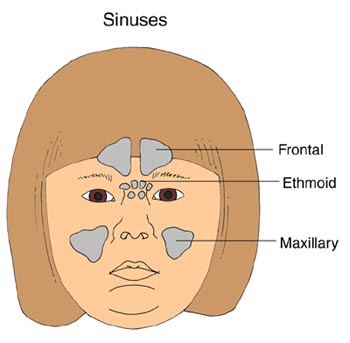Popular Search Terms
Contact the Department of Otolaryngology and Communication Enhancement
617-355-6462
International
+1-617-355-5209
Fax:
617-355-0320
7:00 am - 8:00 pm
9:30 am - 6:00 pm


 Sinusitis is an infection of the sinuses near the nose. The sinuses are cavities or air-filled pockets near the nasal passage. Like the nasal passage, the sinuses are lined with mucous membranes. There are four different types of sinuses:
Sinusitis is an infection of the sinuses near the nose. The sinuses are cavities or air-filled pockets near the nasal passage. Like the nasal passage, the sinuses are lined with mucous membranes. There are four different types of sinuses:


